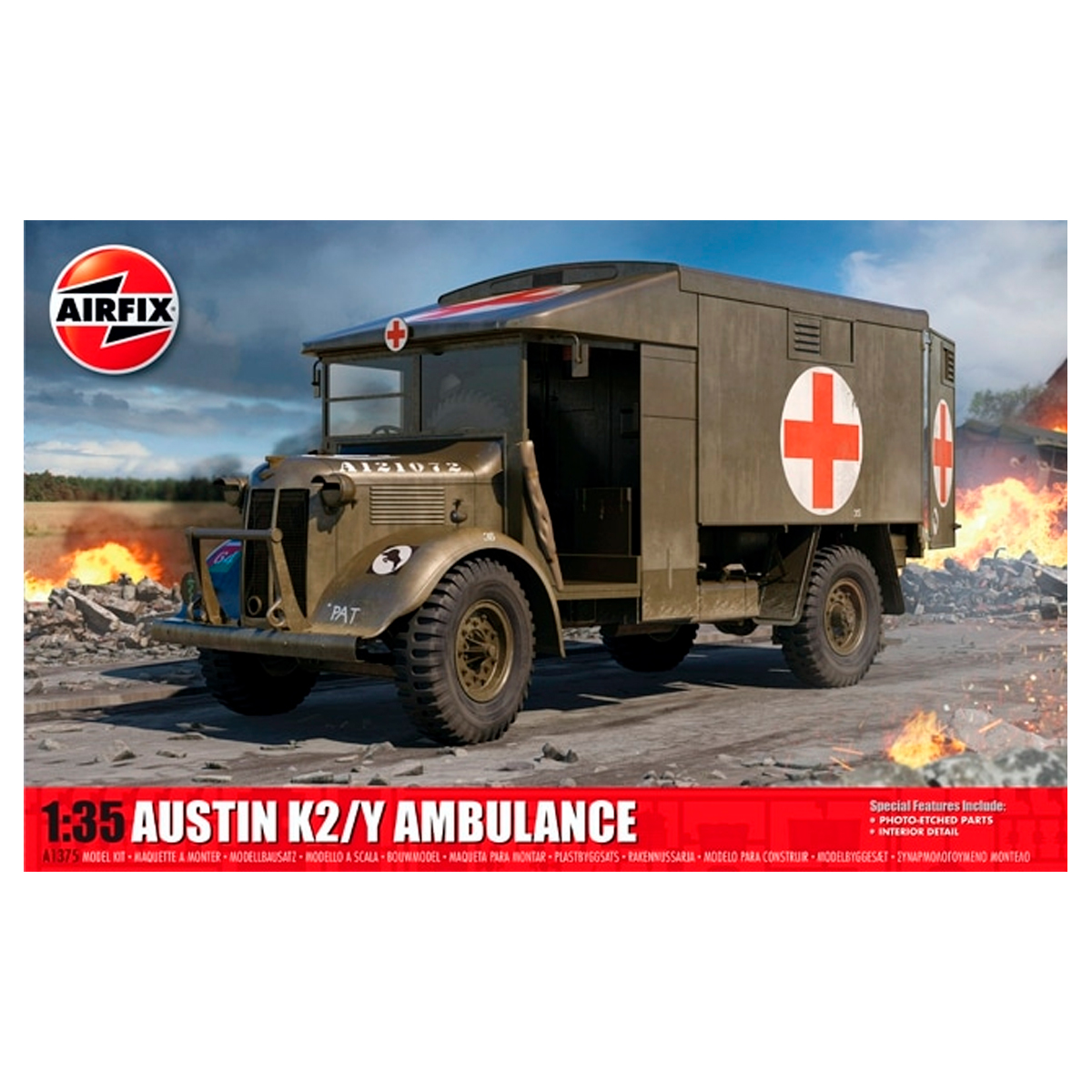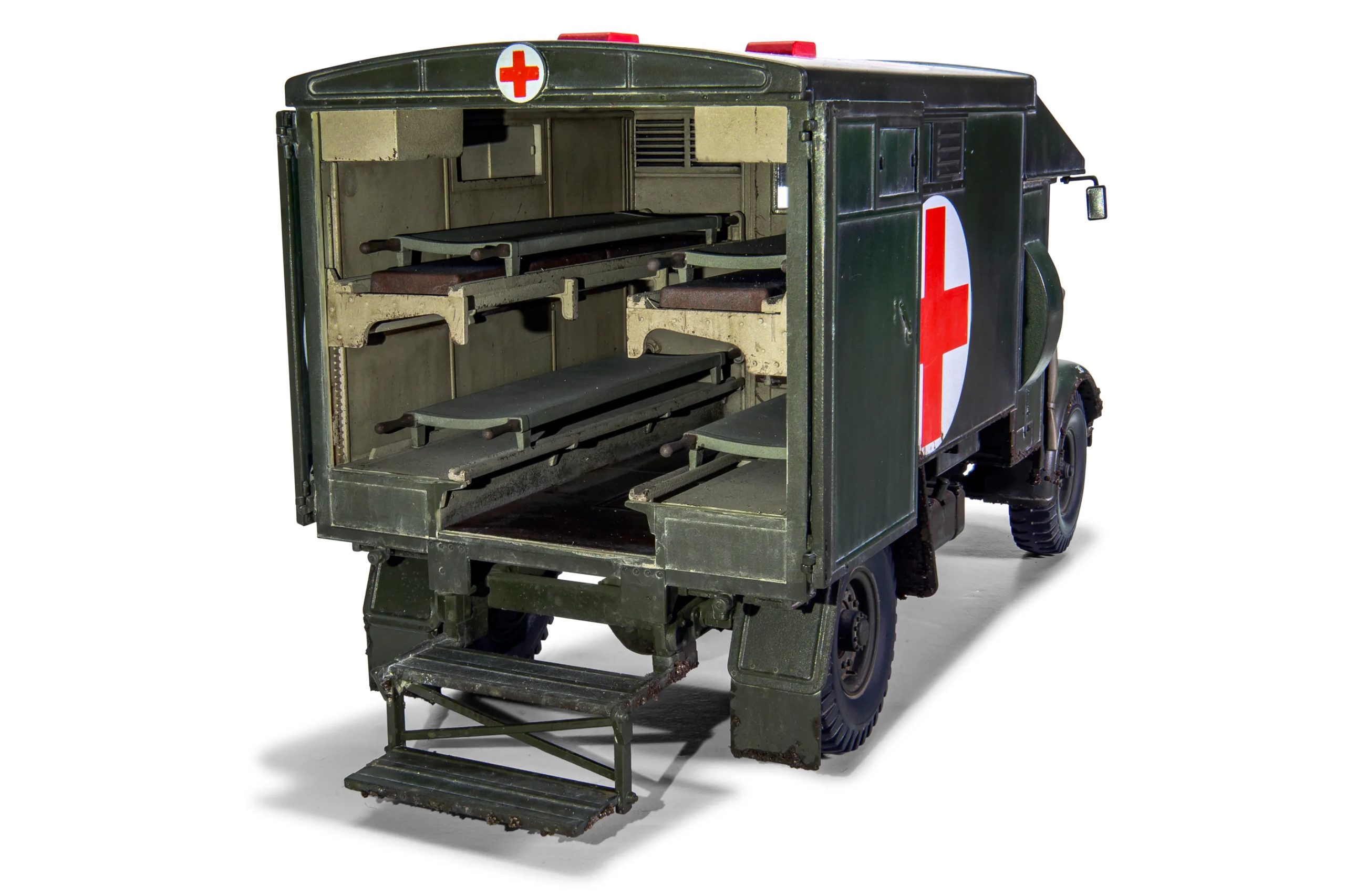British Army Austin K2/Y Ambulance 1/35
30,50€
In stock

*Please check our Privacy Policies to see how to we use your personal data.
*Por favor revisa nuestra Política de Privacidad para ver como tratamos tus datos personales
Some of the most important military vehicles of the Second World War didn’t feature huge main guns, neither were they bedecked with ever thicker armour plating, but are no less fascinating to study. One of the most crucial abilities on any battlefield is to be able to transport your wounded troops quickly and efficiently from the front line, to field medical stations some distance behind the fighting, where they could receive the medical attention they needed and potentially save their lives. Although clearly any vehicle could be used for this task, a dedicated ambulance would often allow the wounded to start receiving care straight away and if you were ever in need of one’s services, you would no doubt class these as the most important vehicles on the battlefield.
One of the most famous vehicles of its type, the Austin K2/Y Ambulance was used extensively by British and Commonwealth forces throughout WWII, both in the combat zones of the world and on the home front. Built around the chassis of the Austin K30 light truck, the casualty compartment was developed in conjunction with the Royal Army Medical Corps and therefore proved to be highly functional. Able to carry either four stretcher cases or ten seated casualties, one of the main reasons why the K2/Y was so successful was because it was so rugged and reliable, requiring only a minimum of maintenance – an ambulance should always be ready when you need it.
The rear cabin was typically constructed of painted canvas on a timber frame, with the highly visible red cross on a white disk positioned prominently on all sides to hopefully ensure the vehicles occupants didn’t come under fire. Once the K2/Y had delivered its latest casualty load to the field station, it would invariably head straight back into the combat zone, at speeds on open roads approaching 50 mph.
An extremely popular vehicle with British, Commonwealth and American troops, the Austin K2/Y was viewed as something as an angel on the troops shoulders. Hopefully, they would never need to see the inside of the ambulance, but if they did ‘Katy’ would be ready and waiting for them. With over 13,000 examples built, these would have been a familiar sight on the battlefields of the world and it is thought that around fifty examples still survive to this day, some having undergone restoration back to something close to their original wartime configuration.
Algunos de los vehículos militares más importantes de la Segunda Guerra Mundial no contaban con enormes cañones principales ni estaban adornados con blindajes cada vez más gruesos, pero su estudio no es menos fascinante. Una de las habilidades más cruciales en cualquier campo de batalla es ser capaz de transportar a las tropas heridas de forma rápida y eficiente desde la línea del frente hasta los puestos médicos de campaña situados a cierta distancia de los combates, donde podrían recibir la atención médica que necesitaban y potencialmente salvar sus vidas. Aunque es evidente que cualquier vehículo puede utilizarse para esta tarea, una ambulancia especializada permitiría a menudo que los heridos empezaran a recibir atención médica de inmediato y, si alguna vez se necesitaran sus servicios, sin duda se considerarían los vehículos más importantes del campo de batalla.
La ambulancia Austin K2/Y, uno de los vehículos más famosos de su tipo, fue muy utilizada por las fuerzas británicas y de la Commonwealth durante la Segunda Guerra Mundial, tanto en las zonas de combate del mundo como en el frente interno. Construido a partir del chasis del camión ligero Austin K30, el compartimento de heridos se desarrolló conjuntamente con el Real Cuerpo Médico del Ejército y, por lo tanto, resultó ser muy funcional. Capaz de transportar cuatro camillas o diez heridos sentados, una de las principales razones por las que el K2/Y tuvo tanto éxito fue su robustez y fiabilidad, que requerían un mantenimiento mínimo: una ambulancia siempre debe estar lista cuando se la necesita.
La cabina trasera estaba construida normalmente con lona pintada sobre un armazón de madera, con la cruz roja muy visible sobre un disco blanco colocada en un lugar destacado en todos los lados para asegurarse de que los ocupantes del vehículo no fueran atacados. Una vez que el K2/Y había entregado su última carga de heridos en el puesto de campaña, invariablemente se dirigía directamente a la zona de combate, a velocidades en carreteras abiertas cercanas a los 80 km/h.
El Austin K2/Y, un vehículo extremadamente popular entre las tropas británicas, de la Commonwealth y estadounidenses, era visto como un ángel sobre los hombros de las tropas. Con suerte, nunca tendrían que ver el interior de la ambulancia, pero si lo hacían «Katy» estaría lista y esperándoles. Se construyeron más de 13.000 ejemplares, por lo que eran habituales en los campos de batalla de todo el mundo, y se cree que aún sobreviven unos cincuenta ejemplares, algunos de los cuales han sido restaurados para acercarse a su configuración original de guerra.
Contenido:
matrices y calcas







 Request of SDS product data file / Product security
Request of SDS product data file / Product security